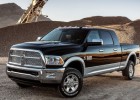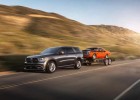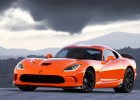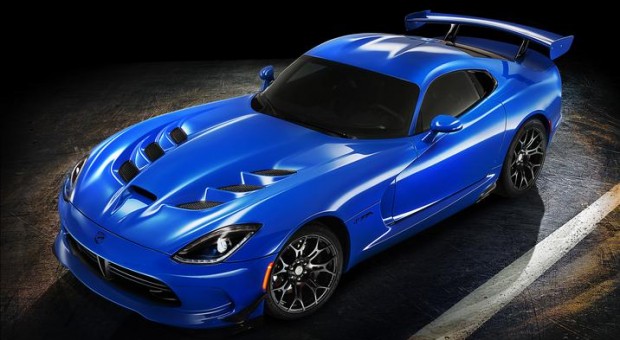
Speed Snake: Meet the Dodge Viper
It is hard not to associate the Dodge brand with thick-bodied muscle cars. The iconic Charger and Challenger are big, bold, and beautiful, and they usually steal the show. Dodge’s newest muscle machine, the Challenger Hellcat, is especially brawny yet enticingly modern, showing off the skill and ingenuity of the brand’s designers. Americans have fully embraced the Hellcat, which is so hot that it is perpetually sold out at dealerships around the country.
Yet, Americans often forget about what could be Dodge’s most outstanding sports car on the lot: the Viper. Since 1993, the Viper has been breaking records (and breaking hearts) with its unparalleled power and loveliness. I think it is time the U.S. got to know this Dodge beauty a little better.
History
The Dodge Viper’s relative obscurity certainly isn’t due to its novelty; the model first debuted as a concept at the 1989 Detroit’s North American International Auto Show. From the car’s first few minutes on the showroom floor, it was obvious that the Viper was a serious departure from the past decade or so of Dodge (and Chrysler) designs: It was bold, it was powerful, and it was absolutely stunning. Critics and crowds immediately praised Dodge for the innovation and the audacity of producing a model so out-of-step with what the public had come to expect.
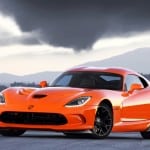 Just three years later, Dodge brought the concept to the roads and produced a Viper that was nearly indistinguishable from the example shown in Detroit. Outfitted with an 8.0 Liter V10 engine and a flawlessly shaped fiberglass body — which critics still admire as one of the most visually appealing cars ever produced — the Viper seemed too good to be true. In 1992, the first Viper could reach 60 miles per hour in 4.6 seconds and tear through a quarter mile in 13.2 seconds. An early prototype worked as a pacer for the 1991 Indy 500 and even now stands proudly in the Motor Speedway museum.
Just three years later, Dodge brought the concept to the roads and produced a Viper that was nearly indistinguishable from the example shown in Detroit. Outfitted with an 8.0 Liter V10 engine and a flawlessly shaped fiberglass body — which critics still admire as one of the most visually appealing cars ever produced — the Viper seemed too good to be true. In 1992, the first Viper could reach 60 miles per hour in 4.6 seconds and tear through a quarter mile in 13.2 seconds. An early prototype worked as a pacer for the 1991 Indy 500 and even now stands proudly in the Motor Speedway museum.
Later, the Viper only continued to improve. Between 1996 and 2002, Dodge released the Viper GTS Coupe which boasted an even more spectacular exterior, as well as many of the features that were missing from the original model: exterior door handles, roll-up side windows, and a pleasant engine roar, among others. Yet, even as the Viper became more fantastical, it lost popularity. Though everyone was overawed by the Viper’s style and function, the sports car seemed impractical on city highways and streets, and the gas taxes of the ‘90s made such a fuel fiend overwhelmingly expensive. The Viper’s spotlight began to fade in 2003 — only to shine even brighter today.
Latest Specs
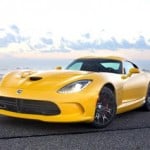 To address the market’s changing tastes, Dodge designed a second generation of Vipers in 2003 that traded raw visual appeal for more practical concerns, like cabin space and fuel economy. Though the car still boasts outrageous power — the V10 engine remains intact — it now has practical upgrades, making braking, handling, and acceleration more feasible in an urban setting.
To address the market’s changing tastes, Dodge designed a second generation of Vipers in 2003 that traded raw visual appeal for more practical concerns, like cabin space and fuel economy. Though the car still boasts outrageous power — the V10 engine remains intact — it now has practical upgrades, making braking, handling, and acceleration more feasible in an urban setting.
After another sales dip in 2010, the Viper briefly disappeared from car lots. Yet, Dodge introduced a third generation of the magnificent muscle car in 2013, and this year’s model lives up to the car’s impressive history. For the newest remake, Dodge aspired to better marry the practicality of the second generation with the raw power and beauty of the first — and in many ways, the SRT Viper Coupe is a roaring success.
Even more powerful than in years past, the Viper now flaunts an 8.4 Liter V10 engine that rustles more than 640 horsepower. Plus, Dodge has placed an emphasis in upgrading the interiors in its entire line of vehicles, so all Dodge dealerships are proud to show off the automaker’s exquisite upholstery, comfortable seating, and intuitive entertainment system. While the Viper remains a supercar, it is now a supercar that can realistically be driven around town.
Custom Options
As a bonus, car buyers can now customize their Vipers to build the sports car to fit their wildest desires. Dodge offers nearly unlimited options for a personalized vehicle fresh from the factory floor: different body materials, hood styles, wheel and spoiler shapes, interior audio configuration, and more than 8,000 paint colors and styles to choose from. The Viper has never been an everyman’s car, and now individuals can make their vehicles especially unique to suit the Viper’s exceptionality.



